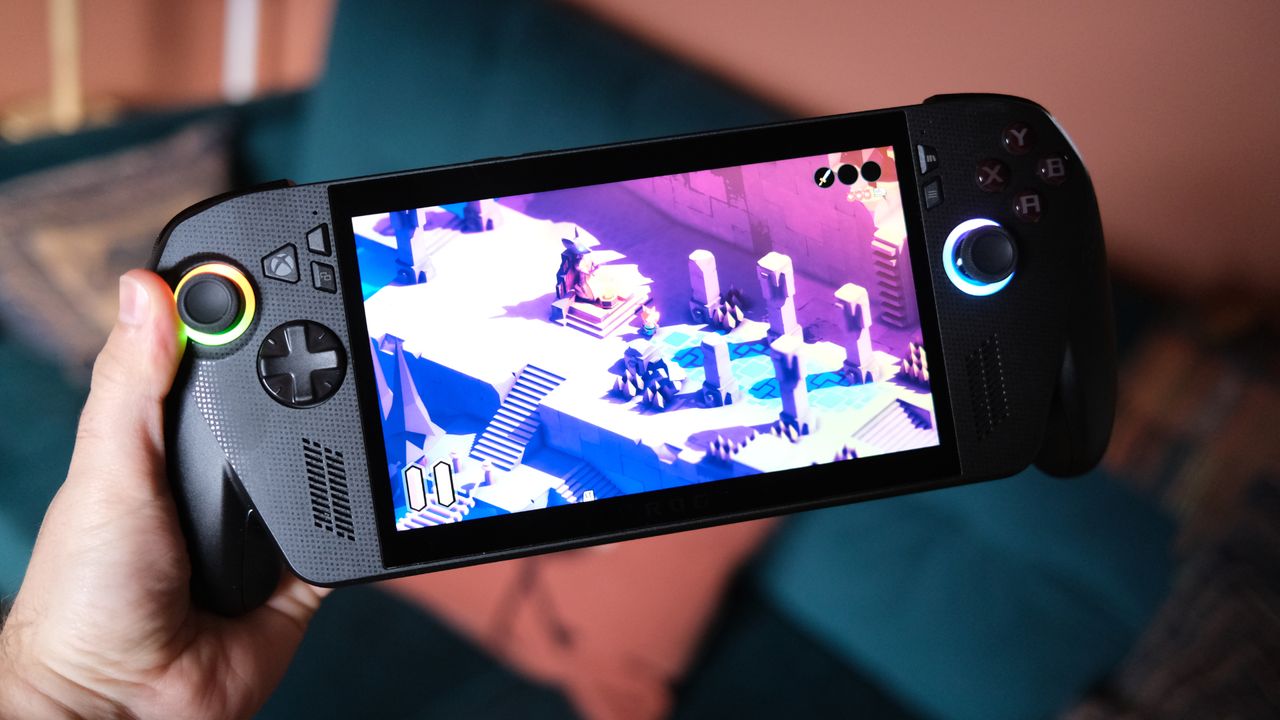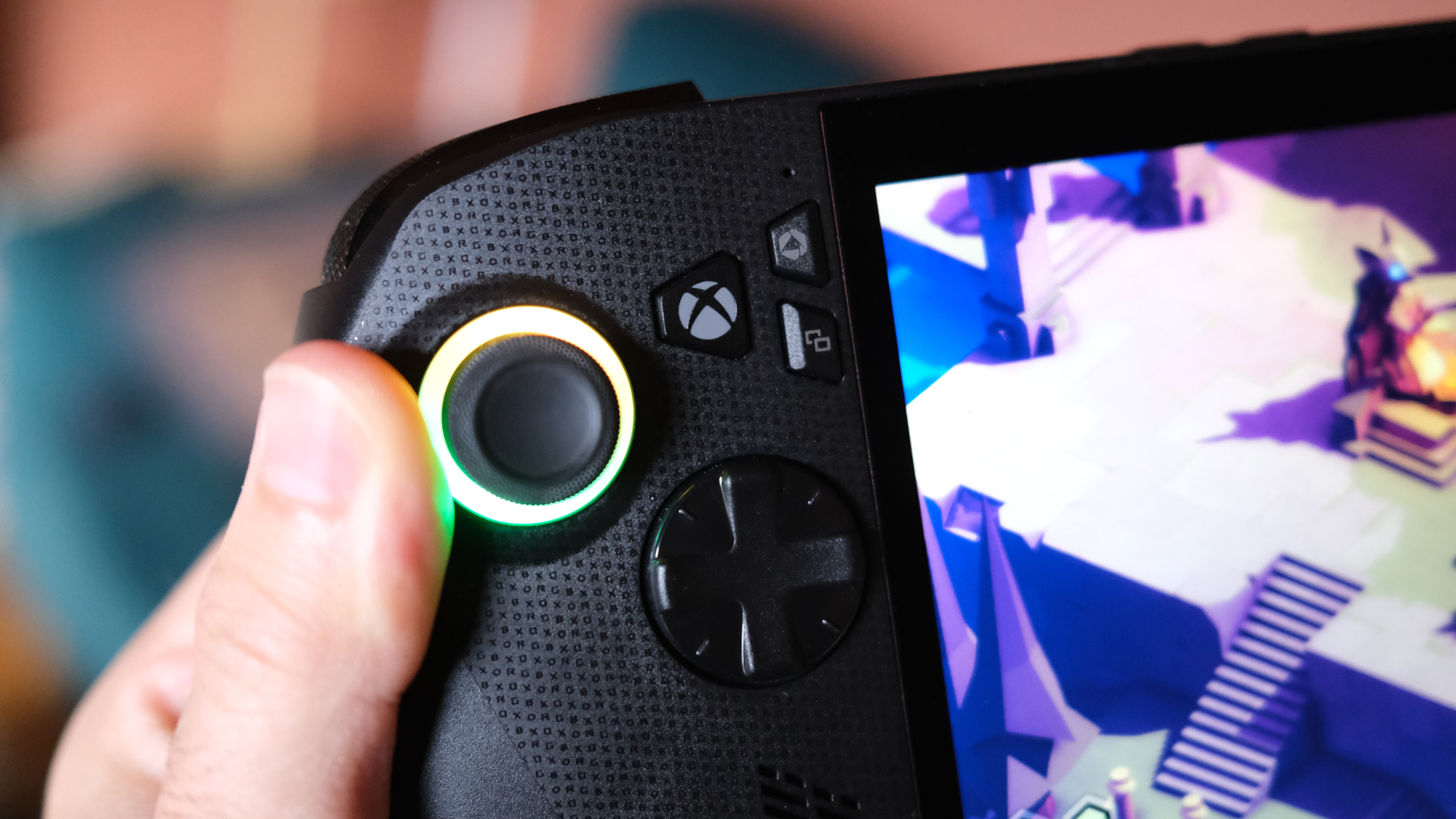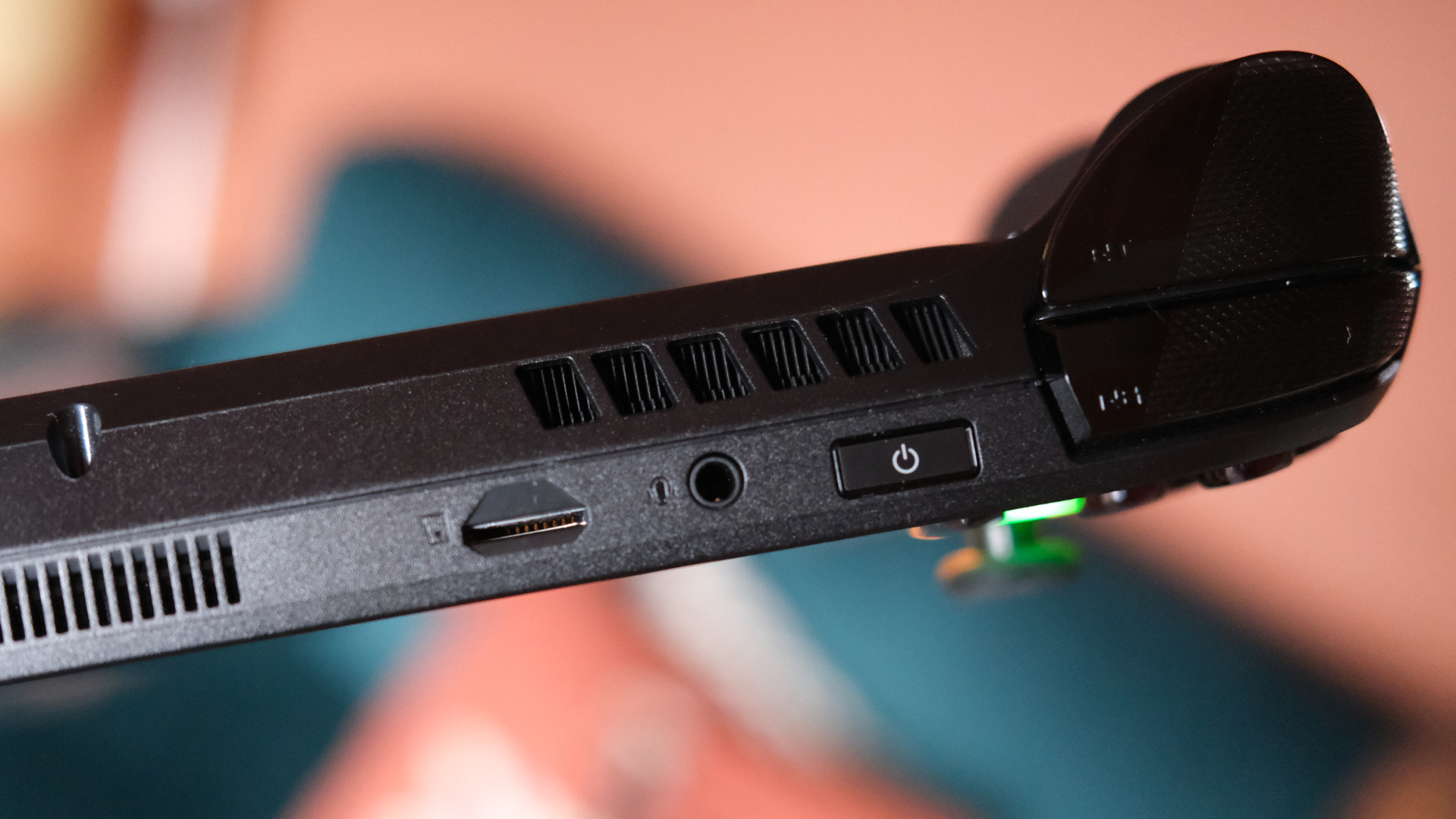
(Image credit: Future)
The moment Xbox announced the ROG Xbox Ally, it became clear that almost everyone interested in playing their Xbox-branded games on the go would have a choice to make before buying. Would they go for the 'basic' Xbox Ally, or upgrade to the significantly pricier Xbox Ally X?
Well, having reviewed the Xbox Ally in detail, I've now had time to test the Xbox Ally X in equal depth. So which one's better? That's a complicated question that comes almost entirely down to your budget, but read on to find out what I thought of Microsoft's superpowered handheld.
Price and Availability
There's no way to soften this blow: the Xbox Ally X is a pricey machine, coming in at £799 / €899 / $999 / AU$1,599 depending on your region.
The machine has theoretically been available for a few weeks now, but unlike the cheaper version its stock has been quite hard to come by.
The Xbox Ally, by contrast, is a £499 / €599 / $599 / AU$999 machine. The eagle-eyed will have spotted that this means the price gap is at its biggest in the US, but there's no escaping the chunky uplift regardless of your location.
Design, specs and features

(Image credit: Future)
I covered the detailed ergonomics of the Xbox Ally in my review of that console – and the short version of my impressions apply to the letter to the Xbox Ally X, which is exactly the same size. So, again, its design might look frankly odd at first glance, but in the hand it pays dividends.
Principally, by integrating the grips from an Xbox controller right into the handheld, Xbox and Asus have ensured that the console actually remains comfortable to hold well into a long gaming session, which isn't true of every handheld I've tested. Some people don't even find it true of the Switch 2, so it's a good choice for Xbox to have made.
One small change here is that the triggers on the Ally X are "impulse triggers", which means they can be tuned to use haptics and tension in games, like a real Xbox wireless controller, which is lacking on the Xbox Ally.

(Image credit: Future)

(Image credit: Future)
There is one huge design difference between the Xbox Ally and Ally X, though, which is in the colour department. The more affordable version comes in white, while this X version is black – presumably to underline its more "pro" performance package.
Other than that, the dimensions are all the same, including the 7-inch display, which isn't upgraded here. That's a shame, despite it being a very solid 120Hz refresh rate IPS panel, because when you pay this much more, you might've hoped for an OLED.
Xbox has put that price hike towards other ends, though, and the real upgrade comes under the hood. This handheld uses the AMD Ryzen AI Z2 Extreme chipset, compared to the Ryzen Z2 A that powers the standard Xbox Ally. You also get more RAM (24GB of LPDDR5x up from 16GB) and double the SSD space (1TB instead of 512GB).

(Image credit: Future)

(Image credit: Future)
The machine, like its sibling, runs on Windows – but with some key changes. It uses an Xbox software wrapper that crucially turns off a chunk of background features that can make Windows inefficient on other handhelds, closing the gap a little to SteamOS.
That said, the setup is still clunky, and you'll find yourself running into many more dialogue boxes and updates than you do on a SteamOS machine like the excellent Lenovo Legion Go S.
Whether the hardware upgrade feels like enough isn't easy to pin down – this is pitched very clearly as a luxury product, even more so than the standard Xbox Ally.
I can't work out whether I think the Xbox Ally X was the second version, with some obvious tweaks but no huge manufacturing changes compared to the Xbox Ally, or if the process was the other way around.
Either way, it leaves the more powerful machine seeming a little like a tickbox exercise to offer a pricier version for those who want. That said, those who do want will be getting a lot of raw power for their money.
Performance

(Image credit: Future)
The big question hanging over the Xbox Ally X is this: is the performance uplift from that AMD Ryzen AI Z2 Extreme worth the extra cost? Well, in my testing, what I definitely can say is that you do feel the benefit a heap.
The uplift won't be obvious until you try to play something demanding, of course. I played through some of Hollow Knight: Silksong on both devices, and performance was literally identical, and the same was true for BallxPit, too. These indie games don't ask much of the hardware, and it's worth wondering to yourself how many of the games you intend to play actually do.
Loading up the likes of Forza Horizon 5, though, I got a good 25% improvement in my frame rates without really tweaking any settings when I played it. Now, on one level, that doesn't sound like a huge upgrade, but when it's the difference between mid-40s frame rates and a steady 60fps, it feels pretty significant.

(Image credit: Future)
The same was true in Doom: The Dark Ages; the game on the base Xbox Ally was playable but got pretty muddy thanks to the low resolution required. On Xbox Ally X, it wasn't exactly console-level where sharpness is concerned, but I had more headroom to up a few settings from "Handheld" to other presets and get some fidelity back while still getting near 60fps.
I've mentioned it before, though, and the fact that all this is happening on a screen identical to the Xbox Ally's is a little hard to swallow. It's fine enough, but something about the design here makes it feel very small relative to the handheld's size, and its brightness and colour accuracy aren't class-leading, either. On the standard Xbox Ally, I had no issue with it, but here it feels like it lags behind the price quite clearly.
A positive note to finish on – the Z2 Extreme is an impressively efficient bit of work from AMD, so while you get more power, I didn't notice a drop-off in battery life between the two machines. I got around 3 hours in less demanding games, and closer to 90 minutes in more resource-hungry ones.
ROG Xbox Ally X review: Verdict

(Image credit: Future)
Microsoft's powerful handhelds continue to slightly baffle. They're accomplished in some regards, but their pricing means they're almost guaranteed to be niche in terms of overall sales – and the Xbox Ally X epitomises that.
It's a great bit of kit if you can afford it – the best ROG Ally out there now, in fact, and up there as one of the best Windows handhelds ever on paper.
However, it's also undeniably pricey – and used prices for the Asus ROG Ally X, for example, make that a hard sell. I think this Xbox machine is better than the standard Xbox Ally, since it's going to age more gracefully thanks to its more powerful chip, but I also don't know how many people want to spend that money right now. Especially without an OLED display upgrade.
I think those buying the Xbox Ally X are unlikely to be disappointed in its raw performance, but whether that makes it good value is another question – it's certainly one of the most interesting handhelds I've tested, though.
Also consider
The obvious option for those who feel themselves baulking at the price of the Xbox Ally X is to opt for the standard Xbox Ally, which is much cheaper and has the same software experience. Sure, it can't run new or demanding games as smoothly, but if you're happy to curate what you play on it, that might not matter.
Alternatively, the best handheld other than the Switch 2 that I've tested is the Lenovo Legion Go S (SteamOS), which shows just how slick SteamOS is. It's also much less powerful than the Xbox Ally X, but feels so great to use, and has a nice design and ergonomics, to boot.

Follow T3.com on Google News to keep our latest news, insights, and features at the top of your feeds!

-
 C114 Communication Network
C114 Communication Network -
 Communication Home
Communication Home


